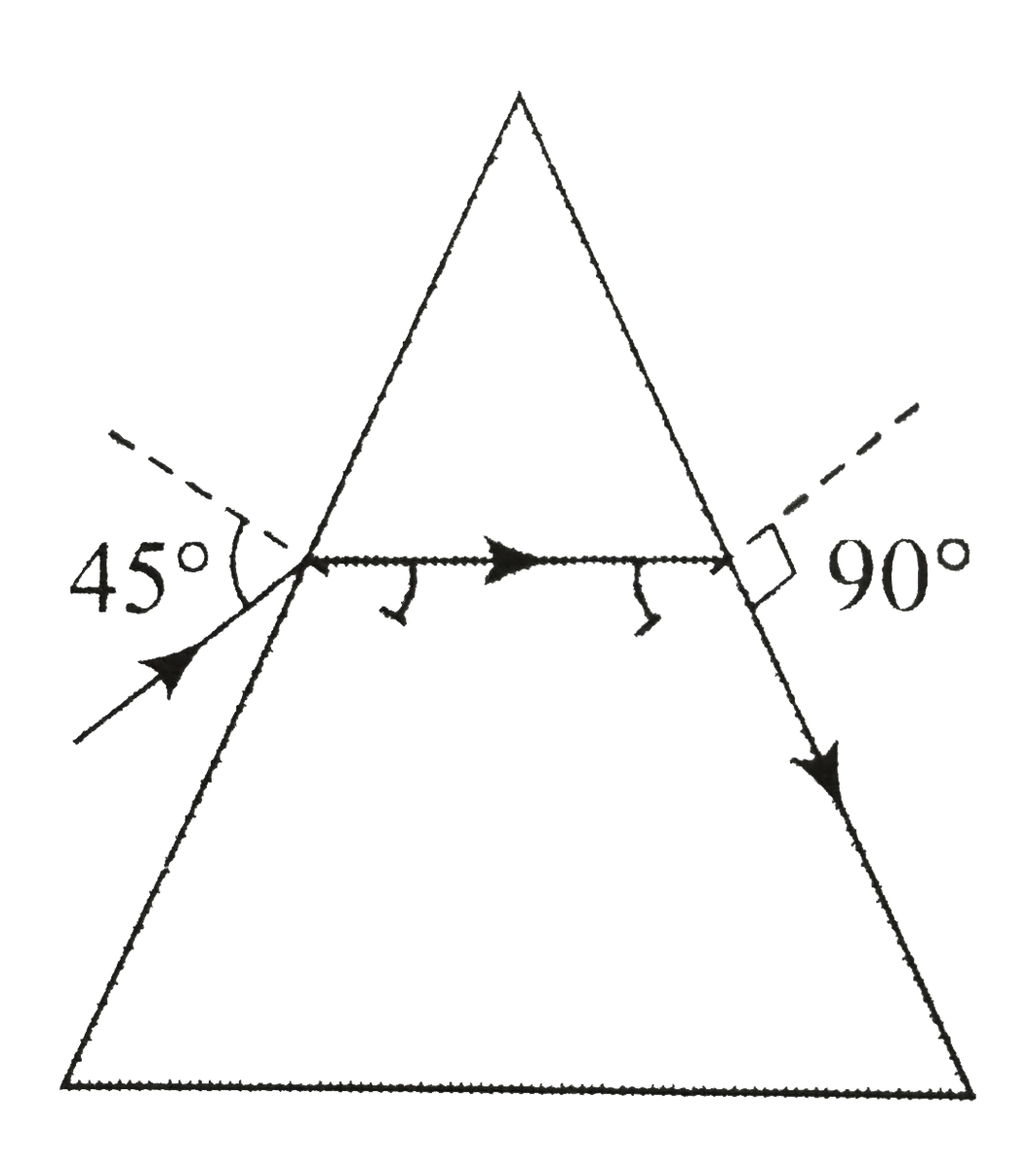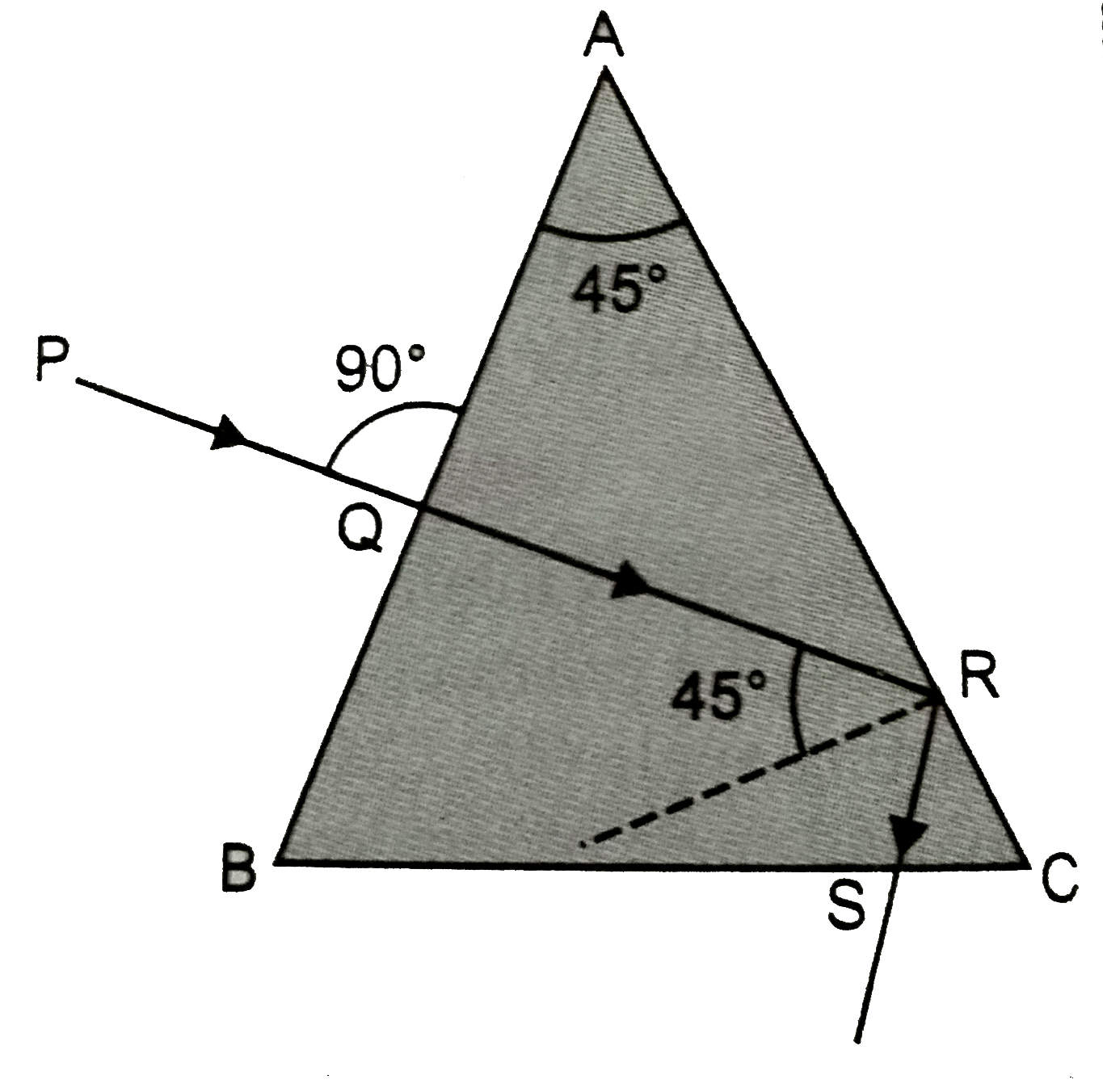If the critical angle for the material of a prism is C and the angle of the prism is A, then there will be no emergent ray when Solution in Marathi
after deviation it will emerge from the second refacting surface
it is totally reflected on the second surface and emeges out perpendicularly from third surface in air .
it is totally reflected from the second and third refracting surface and finally emerges out from the first surface
it is totally reflected from all the three sides of prism and never emerges out
The correct Answer is:B
Step by step video & image solution for If the critical angle for the material of a prism is C and the angle of the prism is A, then there will be no emergent ray when by Physics experts to help you in doubts & scoring excellent marks in Class 11 exams.
Updated on:21/07/2023Topper's Solved these Questions
- REFRACTION OF LIGHT BOOK - TARGET PUBLICATIONCHAPTER - REFRACTION OF LIGHT EXERCISE - COMPETITIVE THINKING
88 Videos
- REFRACTION OF LIGHT BOOK - TARGET PUBLICATIONCHAPTER - REFRACTION OF LIGHT EXERCISE - EVALUATION TEST
15 Videos
- REFRACTION OF LIGHT BOOK - TARGET PUBLICATIONCHAPTER - REFRACTION OF LIGHT EXERCISE - EVALUATION TEST
15 Videos
- RAY OPTICSBOOK - TARGET PUBLICATIONCHAPTER - RAY OPTICSEXERCISE - EVALUATION TEST
16 Videos
- SCALARS AND VECTORSBOOK - TARGET PUBLICATIONCHAPTER - SCALARS AND VECTORSEXERCISE - Evaluation Test
19 Videos
Similar Questions
The angle made by incident ray of light with the reflecting surface is called
View SolutionAssertion : The images formed by total internal reflections are much brighter than those formed by mirrorrs or lenses.
Reason : There is no loss of intensity in total internal reflection.
View SolutionAssertion : The images formed by total internal reflections are much brighter than those formed by mirrorrs or lenses.
Reason : There is no loss of intensity in total internal reflection.
View SolutionWhen image is fomred by reflaction, the field of veiw is maximum for
View SolutionA force →F=4ˆi+3ˆj−2ˆk is passing through the origin. Its moment about point (1,1,0) is
View SolutionIn an isosceles prism of angle 45∘, it is found that when the angle of incidence is same as the prism angle, the emergen ray grazes the emergent surface.
Find the refractive index of the material of the prism. For what angle of incidenc, the angle of deviation will be minimum?

View SolutionA ray of light falls normally on one face of a prism of angle 45∘. If critical angle for material of the prism is 45∘, trace the course of rays, calculate μ.
View SolutionAs shown in Fig. PQ is a ray incident on prism ABC. Show the corresponding refracted and emergent rays. The critical angle for the material of the prism is 45∘. What is refractive index of the material of prism ?
 .
.
View SolutionA ray of light is incident on a prism of refracting angle A. if θC is the critical angle for the material of the prism with respect to the surrounding air, then:
View SolutionIn an isosceles prism of prism angle 45^(@) , it is found that when the angle of incidence is same as the prism angle, the emergent ray grazes the emergent surface. Find the refractive index of the material of the prism.For what angle of incidence the angle of deviation will be minimum ?
View SolutionA ray of light is incident at an angle of 60∘ on one face of a 30∘ prism . The emergent ray from the prism makes an angle of 30∘ with the incident ray. The angle of emergence and refractive index of the material of the prism are-
View Solution(a) Draw a ray diagram showing the passage of light through a glass prism. Hence obtain a relation between the angles of deviation, incidence and emergence and angle of prism.
(b) Show that no ray can pass through a prism whose refracting angle A is greater than twice the critical angle for the material of the prism.
View SolutionIf the critical angle for the material of a prism is C and the angle of the prism is A, then there will be no emergent ray when
View SolutionThe critical angle for the material of a prism is 45^(@) and its refractive angle is 30^(@) . A monochromatic ray goes out perpendicular to the surface of emergence from the prism. Then the angle of incidence on the prism will be
View SolutionIf the ciritical angle for the medium of a prism is C and the angle of prism is A. then there will be no emergent ray when :
View Solution
